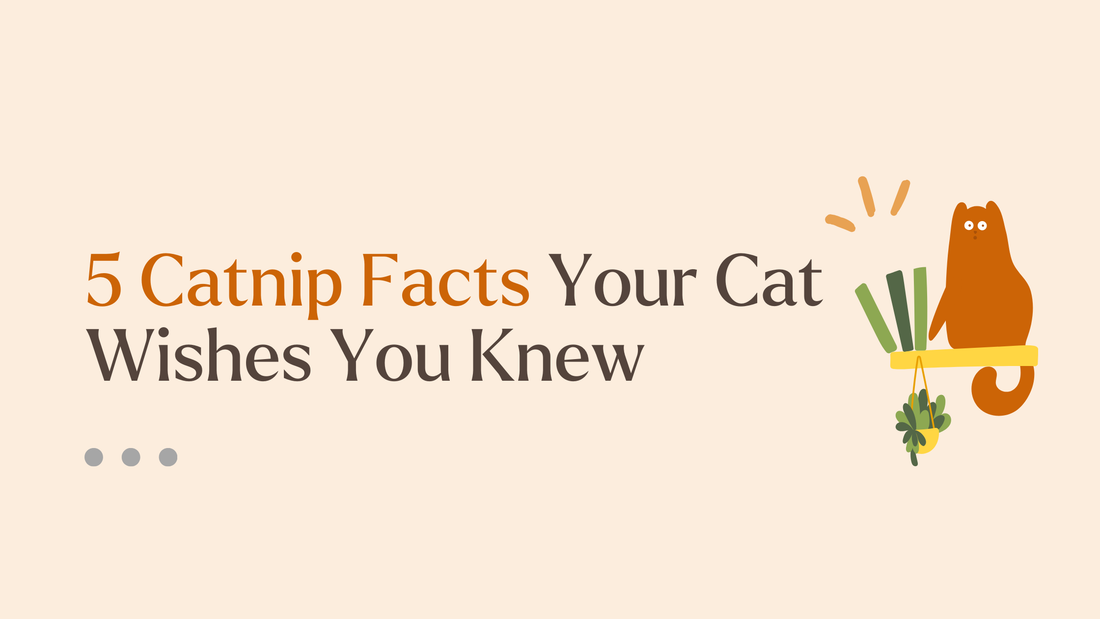
Why Your Cat Loves Catnip and What That Says About Them
Some Cats Go Wild for Catnip and It’s Not Just for Fun
You sprinkle a bit of catnip, and suddenly your quiet cat is rolling, rubbing, or doing somersaults on the floor. It looks funny and random—but there’s a reason behind that reaction. If your cat is one of the lucky ones who responds, they’re showing you a little piece of their wild past.
It’s a Natural Trait Passed Down Through Generations
Not all cats respond to catnip. In fact, studies show that around 30% to 50% of domestic cats feel absolutely nothing. That’s because the reaction to catnip isn’t learned—it’s inherited. Think of it like being right- or left-handed: some cats are simply wired to respond, and some aren’t.
Cats that do react are sensing a compound in catnip called nepetalactone. When inhaled, this oil binds to receptors in their nose and sends feel-good signals to the brain. It activates the same pleasure system that encourages playful behavior, rolling, and rubbing. In some ways, catnip gives cats a moment of euphoria—just like a mini vacation.
Some researchers even believe this response developed as a form of natural bug protection. Yes, that same smell that drives your cat wild might also keep mosquitoes away. Nature always has more than one purpose.
What This Means for Indoor Cat Parents
If your cat is a catnip responder, you have an incredible tool on your hands. Catnip isn’t just fun—it can help manage boredom, anxiety, or transitions like moving apartments or welcoming new people. It's especially helpful for indoor cats who need stimulation throughout the day but may not have access to outdoor play.
Sprinkling catnip in your cat’s environment or giving them a toy filled with high-quality catnip can support their mental health and offer them a healthy outlet for energy. It’s a simple, affordable form of eco friendly pet care that respects your cat’s natural instincts.
Choose Natural Cat Toys That Match the Instinct
But not all catnip toys are created equal. Many are made from synthetic fabrics, glued-on parts, or weak fragrance sprays that fade fast. Worse, some may contain fillers or dyes that aren’t safe for chewing or carrying.
That’s why many cat parents are switching to natural cat toys that are hand-sewn, made with wool or cotton, and filled with organic dried catnip. These toys are more than just cute—they’re safer, longer-lasting, and more satisfying for cats who enjoy scent-based play.
At Moricat, we design our catnip toys with that in mind. Whether worn as a charm or batted across the floor, each piece is created from safe, eco friendly cat products that cats actually enjoy. No glue, no artificial smells—just soft textures and natural scents that connect to your cat’s instincts.
Final Thought
Understanding what excites your cat isn’t just fun trivia—it helps you build a happier home. Whether you’re soothing a nervous cat or encouraging independent play, catnip is a natural tool that taps into something deeper. And with the right toy, you can support your cat’s joy and well-being—naturally.
Content written by: Rebecca Li
Cover design by: Rebecca Li
References (APA Format)
Uenoyama, R., Miyazaki, T., Hurst, J. L., Beynon, R. J., Adachi, M., & Nakata, R. (2021). The behavioral and neurophysiological basis of catnip response. Science Advances, 7(3), eabd9135. https://doi.org/10.1126/sciadv.abd9135
Bol, S., Caspers, J., Buckingham, L., Anderson-Shelton, G. D., Ridgway, C., Buffington, C. A., & Schulz, S. (2017). Responsiveness of cats (Felidae) to silver vine (Actinidia polygama), Tatarian honeysuckle (Lonicera tatarica), valerian (Valeriana officinalis), and catnip (Nepeta cataria). BMC Veterinary Research, 13(1), 70. https://doi.org/10.1186/s12917-017-0987-6
Reiko, U., Miyazaki, T., & Nakata, R. (2021). Why does catnip drive cats crazy? The science of nepetalactone. Nature Chemical Biology, 17(4), 453–460. https://doi.org/10.1038/s41589-021-00723-7
